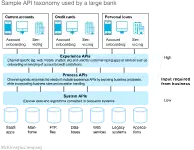Back
API (Application Programming Interface)
Basics
By HackQuest
Jul 17,20244 min readWelcome to the Web3 world, where cryptocurrencies, blockchain, and a unique culture converge. Entering the world of Web3 can be both thrilling and overwhelming, especially when faced with the seemingly cryptic language used by enthusiasts. Don't worry if you feel they sound like some secret codes; we are here to unravel their meaning in Web3 context. In this article, we are going to introduce: [API (Application Programming Interface)].
Overview
In the context of Web3, an API (Application Programming Interface) is a set of protocols, tools, and definitions that allows different software applications to communicate with each other. APIs are essential in enabling interaction between decentralized applications (dApps), blockchain networks, and other digital services. They facilitate the integration and functionality of various services, making it possible for developers to build complex applications by leveraging existing technologies and data.
APIs are crucial in the Web3 ecosystem as they allow seamless interaction between the front-end interfaces of dApps and the underlying blockchain infrastructure. They enable functionalities such as fetching blockchain data, executing smart contracts, and integrating third-party services into decentralized platforms.

Source: Medium
Origins
The concept of APIs dates back to the early days of computer programming, where they were developed to allow different software systems to interact. In the Web3 space, APIs have evolved to facilitate interactions within decentralized environments. With the rise of blockchain technology and decentralized applications, APIs have become integral to connecting various components of the Web3 ecosystem.
APIs in Web3 are designed to handle the unique requirements of decentralized networks, such as immutability, security, and consensus mechanisms. They play a vital role in ensuring that different blockchain-based services can work together seamlessly.
How APIs Work in Web3
Blockchain Data Retrieval
Basic Description: APIs are used to retrieve data from blockchain networks. This can include transaction details, block information, and smart contract states. By using APIs, developers can access and display blockchain data in their applications.
Examples: Infura provides APIs for Ethereum, allowing developers to query blockchain data and interact with smart contracts without running their own nodes. Alchemy is another platform offering similar API services for multiple blockchain networks.
Advantages: Simplifies the process of accessing blockchain data, reducing the need for developers to maintain their own nodes. Enhances the speed and efficiency of building blockchain applications.
Challenges: Dependence on third-party API providers can introduce centralization risks. Ensuring the accuracy and reliability of the data retrieved is crucial.
Smart Contract Interaction
Basic Description: APIs enable developers to interact with smart contracts on the blockchain. This includes executing functions, reading contract states, and listening for events emitted by contracts.
Examples: Web3.js and Ethers.js are popular libraries that provide APIs for interacting with Ethereum smart contracts. They allow developers to call smart contract functions, send transactions, and handle responses.
Advantages: Facilitates seamless interaction with smart contracts, enabling the development of feature-rich dApps. Provides a standardized way to communicate with the blockchain.
Challenges: Requires developers to have a good understanding of the smart contract’s ABI (Application Binary Interface). Managing gas fees and transaction costs can be complex.
Third-Party Integration
Basic Description: APIs allow the integration of third-party services into decentralized applications. This can include services like oracles, decentralized storage, and payment gateways.
Examples: Chainlink provides APIs for accessing off-chain data, enabling smart contracts to interact with real-world information. IPFS (InterPlanetary File System) offers APIs for decentralized storage solutions.
Advantages: Enhances the functionality of dApps by integrating additional services and data sources. Provides more flexibility and scalability for developers.
Challenges: Integrating multiple services can increase the complexity of the application. Ensuring the security and reliability of third-party services is essential.
Challenges and Future Directions
While APIs offer numerous benefits and enable powerful interactions within the Web3 ecosystem, they are not without challenges. One major issue is the potential for centralization when relying on third-party API providers. This can introduce single points of failure and compromise the decentralized ethos of Web3.
Ensuring the security and privacy of data transmitted through APIs is another critical challenge. APIs need to be designed and implemented with robust security measures to prevent unauthorized access and data breaches.
Future directions for APIs in Web3 include the development of more decentralized and resilient API solutions. Projects like The Graph aim to provide decentralized indexing and querying protocols, reducing reliance on centralized API providers. Enhancing the scalability and performance of APIs to handle the growing demand from dApps is also a key focus.

Source: McKinsey
Conclusion
APIs (Application Programming Interfaces) are fundamental to the Web3 ecosystem, enabling seamless communication between different components and services. By understanding how APIs work and the opportunities they present, developers can build more robust and feature-rich decentralized applications.